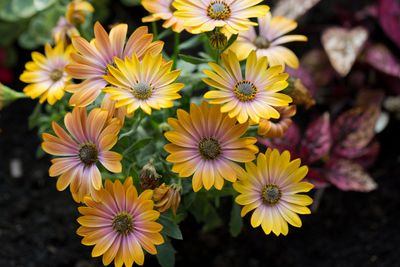About Cape Marigold Cutting Propagation
Cape marigold plants are easily sown from the seeds. However, the resulting plants won’t be true to type, or exact replicas of the parent plants. So, can you grow cape marigold cuttings? Yes. In fact, the only way to propagate exact clones of a certain cape marigold variety is from cuttings. For example, if you wanted to do a stunning border or container filled with purple nemesia and a variety of cape marigold that bears white petals from deep purple centers, the easiest way to save money and guarantee flower color would be to root cuttings of that cape marigold – provided the plant doesn’t have a patent on it.
How to Grow Cape Marigolds from Cuttings
Cape marigold cuttings can be taken in spring and early summer. They can be planted in cells, trays, or pots. Before taking cuttings from the desired cape marigold variety, fill the planting containers with a potting mix such as peat, vermiculite, sand, and/or perlite. Right before propagating cape marigolds from cuttings, water the potting media so it is thoroughly moistened but not soggy. A simple pencil or wooden dowel pushed straight down into the mix will make perfect holes for the cut stems. With clean, sharp pruners, scissors, or a knife, take cuttings from soft, not woody, stems without flowers or buds yet forming on their tips. Take a cutting about 4 to 6 inches (10-15 cm.) long. Trim off all the leaves except two to four at the tip of the stem. Gently rinse the stem cutting, shake excess water off, then dip the bare stem in powdered rooting hormone and place it in a pre-made hole in the potting media. Carefully press the soil back around the stem cutting to hold it in place. After all the cuttings have been planted, place the planting tray or individual containers in a warm location with bright, indirect light. To retain moisture for new cuttings, the containers or planting tray can be covered with clear plastic lids or bags. Water your cuttings when the first inch (2.5 cm.) of soil appears dry. Do not overwater, as the soil should remain moist but not soggy – this can cause damping off or other fungal problems. Do not transplant cape marigold cuttings until they have formed adequate roots to support the young plant. New growth produced at the base of young plants made by cuttings will indicate that the plant has formed adequate roots and is now redirecting its energy into overall growth.
